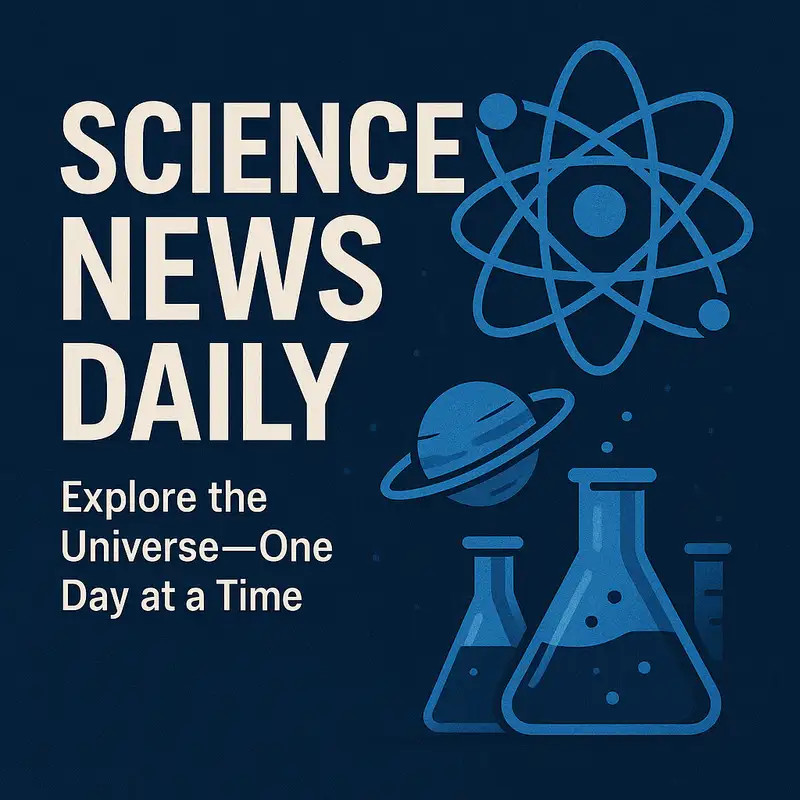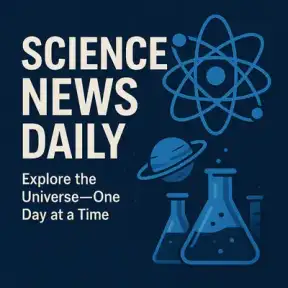🔬 Scientists Detect Universe's Hidden Signals & Create 'Microwave Brain' Chip
Welcome to Science News Daily, your source for the latest discoveries and breakthroughs shaping our understanding of the world. I'm [Host Name], and today we're exploring some fascinating developments that could revolutionize everything from computing to medicine, and even open entirely new windows on the cosmos.
Let's start with what might be one of the most exciting developments in astrophysics. Scientists at the Universities of Birmingham and Sussex have designed a compact new detector that could unlock a completely unexplored region of the universe. This small device is capable of sensing gravitational waves in the elusive milli-hertz frequency range, using precision optical cavities and atomic clock technology. What makes this particularly exciting is that these waves could reveal cosmic events we've never observed before, including black hole mergers and white dwarf binaries. It's like getting a brand new pair of glasses to see parts of the universe that have been invisible to us until now.
Speaking of cosmic discoveries, the James Webb Space Telescope continues to amaze us with its findings. New observations suggest that the universe's very first stars might not have been ordinary fusion-powered suns at all. Instead, they may have been enormous "supermassive dark stars" powered by dark matter annihilation. These colossal, luminous spheres made of hydrogen and helium could explain both why early galaxies appear unexpectedly bright and how the first supermassive black holes formed. It's a discovery that could fundamentally change our understanding of how the universe evolved in its earliest days.
Closer to home, we're learning new secrets about our own moon. When NASA's Artemis astronauts eventually land near the moon's south pole, they may be stepping into a region that holds vital clues to the moon's ancient past. A new study reveals that a massive asteroid struck the moon from the north roughly 4.3 billion years ago, creating the enormous South Pole-Aitken Basin. This discovery overturns earlier theories about how this massive lunar feature formed and provides new insights into the violent early history of our solar system.
Now let's turn to some groundbreaking developments in technology and medicine. Engineers at Cornell University have created something they're calling a "microwave brain" - the world's first microchip that computes using microwaves instead of traditional digital circuits. This tiny processor can perform real-time tasks like signal decoding, radar tracking, and data analysis while consuming less than 200 milliwatts of power. The implications for computing and artificial intelligence could be enormous.
In the realm of materials science, researchers have developed a revolutionary 3D printing method that can make metals up to 20 times stronger than conventional techniques. The process uses hydrogels as templates to produce ultra-dense, durable metals and ceramics. By building a gel scaffold that's later infused with metal salts and converted into nanoparticles, they can create materials that are not only stronger but also less prone to defects.
Turning to medical breakthroughs, scientists have made a fascinating discovery about artificial neurons. Engineers at UMass Amherst have built artificial neurons powered by bacterial protein nanowires that function just like real ones, but at extremely low voltage. This allows for seamless communication with biological cells while drastically improving energy efficiency. The discovery could lead to bio-inspired computers and wearable electronics that no longer need power-hungry amplifiers.
In neuroscience, researchers have uncovered what they're calling the brain's "hidden pain switch." They've identified a set of brainstem neurons that can dial down chronic pain. These neurons balance pain with other vital needs like hunger and fear, showing that the brain can override suffering when survival is at stake. This discovery could transform how we understand and treat chronic pain.
Speaking of medical discoveries, scientists have launched a 14.2 million dollar project to decode what they're calling the body's "hidden sixth sense" - interoception. This is the little-known process through which our nervous system tracks and regulates our internal organs. Understanding how our brain recognizes when it's time to breathe, when blood pressure has fallen, or when the body is fighting infection could lead to revolutionary medical treatments.
Not all the news is purely positive, though. Research continues to highlight health concerns we should be aware of. A new study suggests that eating large amounts of ultra-processed foods could be as harmful as smoking, with people showing significantly higher inflammation levels tied to heart disease and cancer. Meanwhile, concerns are growing about finasteride, a common hair-loss drug that has been linked to depression and suicide, with critics arguing that regulators have ignored important warnings about its psychiatric effects.
On a more optimistic note, scientists have made progress in regenerative medicine by discovering stem cells that could potentially regenerate teeth and bone. Researchers identified two separate stem cell lineages responsible for forming tooth roots and the alveolar bone that anchors teeth in the jaw, opening up exciting possibilities for dental treatments.
Finally, let's end on a note about scientific progress itself. A new AI-driven system called FAIR² Data Management aims to tackle a major problem in science - the fact that an estimated 90% of research data remains unused, trapped in labs or lost to time. This groundbreaking system makes datasets reusable, verifiable, and citable, potentially unlocking vast amounts of valuable research that could accelerate scientific discovery.
From gravitational wave detectors that could reveal new cosmic phenomena to artificial neurons that communicate with living cells, from dark matter-powered stars to pain switches in our brains, science continues to surprise and inspire us. These discoveries remind us that we're living in an age of unprecedented scientific advancement, where each breakthrough opens doors to possibilities we're only beginning to imagine.
That's all for today's Science News Daily. Keep looking up, keep asking questions, and remember that the universe still has countless secrets waiting to be discovered. Until next time, this has been [Host Name]. Stay curious!

